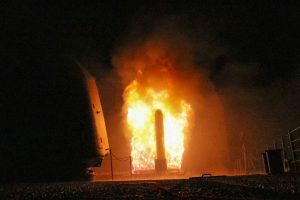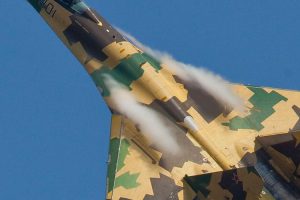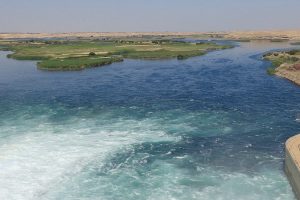The US State Department told Grasswire on Friday, June 23, that it has begun providing humanitarian and stabilization assistance in Raqqa and other parts of Syria liberated from Islamic State.
The mission was first reported by the New York Times on June 22.
A State Department official told Grasswire that “US government civilian experts” have begun working in Syria, but they declined for security reasons to confirm the size of the mission or the specific locations in which it will work. A spokesperson for the Coalition told Grasswire that the Coalition will assist with security.
“The United States is providing humanitarian and stabilization assistance in Raqqa and other areas liberated from ISIS in Syria.
These efforts will be focused on meeting immediate needs through the provision of humanitarian assistance, clearing explosive remnants of war, and the restoration of essential services to enable people to return home and to prevent the return of ISIS.
These efforts grew out of a concerted State-USAID-DoD planning process.”
US State Department official
According to the New York Times, the team consists of only seven people including security personnel. Aside from clearing the explosive remnants of war (ERW), the Times says their mission focuses on efforts to enable people to return to their homes by prioritising efforts to clear IEDs left by Islamic State, and to restore electricity and access to clean water.
In its most recent report on Raqqa which covers the period to June 19, the UN’s Office for the Coordination of Humanitarian Affairs said that since early June, around 50,000 people have been displaced in Ar-Raqqa governorate, bringing the total number of people displaced to 177,847 since April 1. Of them, 101,921 people have been displaced since May.
Water, electricity and the Tabqa dam
OCHA estimates there are still 5,000 IDPs in Tabqa city, more than a month after the SDF captured it on May 10. The agency expects an additional 15,000 people to arrive in Tabqa from eastern rural Hama in the coming weeks.
In nearby Mansoura, 7,500 IDPs – mostly herders with cattle – are living in about 450 traditional handmade tents or are “accommodated by the host community.”
Despite ongoing efforts to clear unexploded ordnance and IEDs, OCHA says some UN partners have highlighted restricted access due to ERW.
The Tabqa dam previously provided both water and electricity to the Raqqa area until it was hit by Coalition strikes in March while it was still under IS control. On March 26, the US-led Coalition said there was no imminent danger to the dam, and that it “when we strike military targets in the vicinity of the dam we do not use high explosive munitions so as not to cause unnecessary damage to the dam.”
Islamic State’s news agency Amaq posted a video on March 26 which it said showed damage to the dam’s hydro-power plant control room and structure, saying that the electrical power systems were no longer functional.
Raqqa24 said a nearby electrical power distribution system was damaged.
The Coalition later clarified to Grasswire that when it refers to “the dam” it means solely the construction that retains water, not anything else associated with it, for example power generation or water distribution facilities.
Ahmed Al Hussein, the head technician for the dam, was killed in an strike on March 27, along with a volunteer from the Syrian Arab Red Crescent. The SDF had paused its assault that day to allow the engineers to assess the damage, and their visit was sponsored by SARC. It is unclear who carried out the strike or whether it was an airstrike or artillery.
On March 30, Coalition spokesperson Col. Joseph Scrocca dismissed reports of a SARC fatality in the Tabqa area. Hours later, Syrian Arab Red Crescent confirmed one of its volunteers was killed.
A spokesperson for the Coalition told Grasswire on March 26 that: “The SDF has a robust plan in place to care for the dam post liberation from ISIS that will work through the resources of the United Nations and subject matter experts on dam engineering.”
Grasswire has contacted multiple UN agencies but has not yet been able to confirm what the plan referred to entails.
Grasswire has also contacted the UN and the US State Department to ask if the State mission in the Raqqa area was coordinating with UN agencies. Neither have responded to the question.

Coalition military engineers assessed the dam on May 17, and reported that there were no immediate safety concerns.
A spokesperson for the Coalition told Grasswire on June 8 that: “The trip was limited in scope due to no access to inside the dam and adjacent buildings since they had not been cleared of IEDs and ERW.”
However, a UNICEF spokesperson told Grasswire on June 13 that the agency was focusing on the repair of the Tabqa water station, and that it was operating partially after fighting in the area damaged the facility.
“Following an initial assessment completed by the local water board in Raqqa, UNICEF has mobilized resources to undertake electromechanical repairs of the water facility,” the spokesperson said, adding that generators were being provided to continue operation during power outages.
“Due to insecurity, technicians are unable to access the area to repair the damage. UNICEF and partners stand ready to start the repair work, once safe access is secured,” the spokesperson said.
The spokesperson stressed that the agency “is not involved in the repair or any other work linked to the hydro-power plant in the Taqba dam.”
UNICEF told Grasswire that, via its partners, it is trucking water to around 120,000 people staying in camps. The agency has also been providing water disinfectant for water facilities, ensuring a supply of safe drinking water. It is also distributing aqua tabs and jerry cans to displaced families fleeing the fighting.
Up to 100,000 people in “dire” situation in Raqqa city
OCHA says the humanitarian situation inside Raqqa city remains dire, and concern is growing over reports of increased shortages of food, medicine, water, electricity and fuel. Although there is one functioning hospital that serves the area, severe shortages of both medical staff and supplies have been reported.
The agency estimates that approximately 50,000 people may have been displaced from the city and surrounding areas during the first two weeks of June, and that further displacements are anticipated as the SDF moves closer to the city center.
Many people flee to camps north of Ar-Raqqa city, particularly to the Ein Issa camp, but OCHA also expects a large number of people to flee towards IS-controlled areas near Deir-ez-Zor city. Others may go south toward the Rukban camp, along the Jordanian-Syrian border near At Tanf.
The UN estimates that 50,000-100,000 people remain in Raqqa, and UNICEF estimates 40,000 children are “in the line of fire.”
Problems returning home
OCHA said that reports suggest that 203 out of 231 IDP families in Mabrouka camp have requested to leave, and the remainder wish to stay until they can return to their home villages. People who want to leave the camps cannot because their identity cards and papers have been taken by what the UN refers to as the Kurdish Self Administration.
Similarly, in Karama and Hamrat camp, which houses around 40,000 people, a partner informed OCHA that camp administrators took all the ID cards belonging to IDPs. OCHA also notes that there are issues with movement to and from the camp at Ayn Issa.
OCHA says “security measures including screening and the regulated exit from sites through sponsorship requirements” remain.






